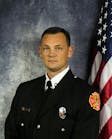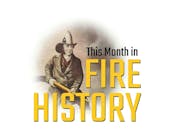Firefighters Need to Prepare For Active Shooters
Source Firehouse.com News
“When everything else turns to hell, they turn to the fire department to fix whatever is wrong,” said Dr. Cortez Lawrence, an education specialist for the U.S. Fire Administration (USFA) during a presentation at Firehouse Expo on Friday.
Lawrence was giving a presentation titled “Active Shooter/Multiple-Casualty Incident Planning" to a room full of firefighters and responders.
“Fire departments must plan on becoming their community’s ‘agency of last resort,’” Lawrence said.
Lawrence said that after the Aurora, Colo., mass shooting at the Century 16 Movie theater in July 2012, where 12 people were killed and 70 were injured, the USFA decided to formulate a guide for active shooters responses.
The document, which Lawrence presented at Firehouse Expo, has been reviewed by 65 peers and continues to be a work in progress.
“We didn’t have anyone from Aurora involved with it because it was too fresh and there were still investigations underway,” Lawrence said. “…It continues to be a live document today.”
Lawrence said before communities adopt a plan to respond to active shooter incidents, they need to decide how much they’ll get involved.
“Many agencies are opting out, but if you do decide to become involved, you need to make sure your personnel are trained, equipped and protected,” Lawrence said. “You don’t want to become part of the problem.”
Communities that elect to send firefighters and first responders into the fray need to make sure they have everything needed to do the job, from ballistic vests to trauma packs with tourniquets and hemorrhage control materials. Above all else, they’ll need protection from law enforcement.
Lawrence said everyone needs to remember that a shooting incident is a criminal activity and therefore, it is a law enforcement scene, even though it may involve emergency medical services, firefighters and even the public works.
That’s why he recommends agencies use the National Incident Management System template for managing the scene. Lawrence says he’s witnesses too many incidents where there is no unified command and each agency involved with its own command post, sometimes more than one depending on the size of the incident.
“To be the most effective, you really need to have one command post,” Lawrence said. “You need to have unity of purpose and a big picture of the event.”
Lawrence said recently, the American College of Surgeons Committee on Trauma, and the Prehospital Trauma Life Support Executive Council developed a Tactical Emergency Casualty Care protocol and from that, an acronym called THREAT.
He said it helps responders keep track of the needed response to mass shooting events which includes T- threat suppression, H- hemorrhage control, RE- rapid extrication, A- assessment by medical providers, and transport to definitive care.
In conjunction with that, Lawrence that someone should be in charge of developing a list of all the victims, including names and where they were taken and the general nature of their injuries. That information will be important later as the incident is resolved and people start looking for loved ones.
Lawrence offered a variety of tips designed to help responders develop their own plan for active shooter incidents.
He said it is important to define cold, warm and hot zones at every incident and to restrict the areas in accordance with the threats. Bullets, he said can penetrate concrete and bricks, so there are some areas might look secure, but are not.
Staging and public information officers need to be in the cold zone, Lawrence said, and only those would need to be directly involved with the fight need to be in the hot zone.
And, speaking of public information, Lawrence recommends a unified public message. “You need to be very careful what you say,” he said. “Tell the truth, be brief and it’s OK to be evasive to help the mission. …Remember whatever you say, you’re going to be scaring the hell out of a lot of people.”
Staff needs to be dedicated almost immediately upon arrival of a shooting scene to keeping ingress and egress open for emergency vehicles, especially ambulances, he said. There are always issue with self-deployment and freelancing and each person who responds, even if it’s out of their jurisdiction, will arrive in a vehicle and undoubtedly will lock it up, creating a barrier. Lawrence said a strong officer will need to have authority to have those vehicles go to staging keeping the area clear for needed vehicles and staffing.
“Nobody wants to go to staging,” Lawrence said. “Everyone wants to be involved even though activities have been duplicated and even tripled. It’s who we are. We are action people. We want to do something.” That’s why the staging officer will need to be a very strong individual to keep resources in staging where they are needed most.
There should also be an area for survivors and family members to gather too, Lawrence said, noting that churches, civic centers and public buildings in the cold zone are best for that activity. Whatever space is used will need to have a large parking areas to accommodate the flood of people who will want to be reunited with family and friends.
Lawrence said that as the active shooter guidelines were being developed, there was a realization that the same information could be used for natural disaster responses like tornados.
There are similarities between the two because both use resources and skills that are not often used by firefighters and responder, Lawrence said.
“If you can handle an active shooter event, you can handle just about anything,” Lawrence said.





